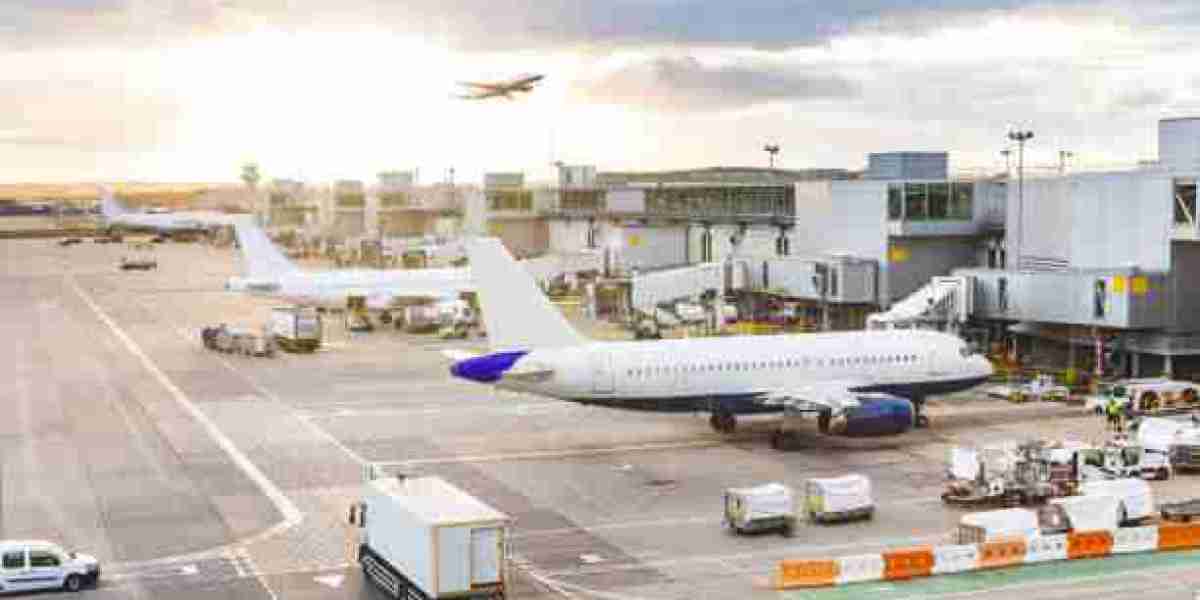The airport stand equipment market is an integral part of the aviation industry, encompassing the various tools and systems used to service aircraft while on the ground. These stand equipment include jet bridges, ground power units (GPUs), air conditioning units, refueling systems, aircraft towing vehicles, and more. As airports continue to modernize and the demand for air travel grows, the airport stand equipment market is undergoing significant transformations, driven by technological advancements, sustainability goals, and operational efficiency.
Market Overview
The airport stand equipment market is expanding rapidly, with both new installations and upgrades of existing infrastructure contributing to growth. This expansion is largely fueled by the increasing number of passengers worldwide and the rising volume of air traffic. According to the International Air Transport Association (IATA), global passenger numbers are expected to reach 8.2 billion by 2037, further intensifying the demand for airport infrastructure. With airlines and airport authorities investing heavily in ground service equipment, the market for these essential tools is seeing an upward trajectory.
Additionally, airports are increasingly investing in automation to streamline their operations. Automated aircraft pushback systems, self-boarding gates, and robotic tugs are becoming a common sight at larger airports, driving the demand for high-tech stand equipment.
Key Drivers of Market Growth
Rising Air Traffic and Passenger Numbers: The increasing global air passenger numbers are a key driver of the airport stand equipment market. Airlines need more efficient and robust equipment to handle the growing demand for faster turnarounds, minimal ground-time for aircraft, and enhanced passenger services.
Technological Advancements: Automation and digitalization are transforming airport ground operations. Innovations such as smart jet bridges that adjust to aircraft types, automated aircraft pushback systems, and autonomous refueling vehicles are becoming more common. These advancements not only improve operational efficiency but also reduce human error, ensuring faster and safer services for aircraft on the ground.
Sustainability and Environmental Concerns: Airports worldwide are increasingly focused on reducing their environmental impact, and this is influencing the stand equipment market. Ground power units (GPUs) that reduce the need for aircraft auxiliary power units (APUs) are gaining traction. These sustainable solutions reduce carbon emissions and fuel consumption, aligning with airports’ sustainability goals. Furthermore, electrification of ground handling equipment, such as electric tugs and refueling vehicles, is being increasingly adopted.
Safety Regulations and Standardization: The aviation industry is governed by strict safety regulations, and airports are obligated to comply with international standards. As such, the need for compliant stand equipment that meets safety requirements is propelling the market forward. Upgrading older infrastructure to meet these safety regulations also contributes to the market growth.
Market Segmentation
The airport stand equipment market can be broadly segmented into different categories based on equipment type, airport size, and geography:
By Equipment Type:
Jet Bridges: These are essential for connecting passengers to the aircraft, particularly in large airports. Innovations in jet bridge designs, including customizable and adaptable solutions, are driving demand.
Ground Power Units (GPUs): These units provide electricity to parked aircraft, replacing the need for the aircraft’s engines or APUs, reducing fuel consumption and emissions.
Refueling Systems: With rising aviation fuel prices and a growing emphasis on fuel efficiency, modern refueling systems that are faster, safer, and more precise are increasingly important.
Aircraft Towing Vehicles: These vehicles assist in moving aircraft on the ground, ensuring smoother operations and minimizing the risk of accidents.
Air Conditioning Units: In regions with extreme weather conditions, mobile air conditioning units help maintain comfortable cabin temperatures while the aircraft is on the ground.
By Airport Size:
Large Airports: Major international airports are the primary consumers of advanced stand equipment, requiring high-capacity and highly automated systems to handle a large number of aircraft.
Small and Regional Airports: While smaller airports may not demand the high-end equipment found at large international hubs, there is still a steady demand for basic stand equipment such as towing vehicles and GPUs.
By Geography:
North America and Europe are dominant players in the market, given the high volume of air traffic, substantial investment in airport infrastructure, and an increasing focus on sustainability.
Asia-Pacific is expected to experience the fastest growth, driven by the rapid expansion of airports in countries like China, India, and Japan, where increasing middle-class populations are leading to higher air travel demand.
Challenges and Restraints
Despite the positive outlook, several challenges are shaping the airport stand equipment market:
High Initial Investment: The procurement and installation of airport stand equipment can involve significant capital expenditure, which may be a hurdle for smaller airports or those in developing regions.
Maintenance and Lifecycle Costs: The maintenance of stand equipment is essential to ensure operational efficiency. Over time, repair and servicing costs can add up, especially for highly specialized equipment. Budget constraints in certain regions may delay maintenance schedules, impacting performance.
Technological Complexity: While automation offers great benefits, the complexity of integrating new technologies into existing airport infrastructures can be challenging, especially for older airports that may not have the required technology backbone.
Conclusion
The airport stand equipment market is evolving rapidly, driven by technological advancements, increasing air traffic, and sustainability goals. The shift toward automation and greener solutions is reshaping ground handling operations, making them more efficient and eco-friendly. While there are challenges in terms of cost, maintenance, and technological integration, the market’s future looks promising, with continued investment in modern, efficient equipment shaping the future of airport operations. As global air travel continues to grow, the demand for state-of-the-art stand equipment will remain strong, positioning this sector as a crucial component of the aviation industry.




